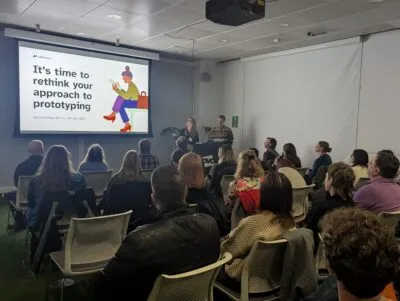Our Customer Centricity Model
Our Customer Centricity Model measures organisational maturity and its impact on customer experience. It helps us to make sense of what is happening in customer-centric innovation and design. According to our research:
-
Low-maturity organisations show limited engagement with customer feedback, leading to shaky beginnings for new services.
-
Mid-maturity organisations have the structures and processes needed to deliver satisfactory—but often undifferentiated—experiences.
-
High-maturity organisations adopt a systematic approach, excelling in customer experience and achieving significant success.
Our data shows that most organisations are stalled at a mid level of maturity – 51% are at level 3. At this level, organisations can have built quite large teams that are able to deliver good work that’s inline with market expectations – but they’ve not integrated customer centricity into their strategy or governance.
But the business benefits of increased growth, organisational agility, and employee satisfaction – only kick in for those at the top end – those that score 4.5 or more on our five point scale.
We think this shows organisations need to get to level 3 maturity to survive. Organisations that push past this level will create exceptional customer experiences and get exceptional benefits.
Measuring success
We’ve interviewed customer experience leaders in large organisations to get a better picture about what’s going on.
Those interviews back up our analysis of the customer centricity model data.
What’s interesting is that a few have seen their user centred design teams avoid cuts.
A common theme is that those teams have focussed on measuring value generated throughout the user journey.
They have been able to identify where customer centred design has added value (or removed cost) in the user journey.
The value of this is twofold.
First, it means that new projects always have a strategic focus on value. So they’re able to prioritise work that’s likely to have an impact on the bottom line.
Second, the team is able to show how it is contributing to the bottom line – meaning senior leaders are able to prioritise investing in the team.
What’s key here is teams taking responsibility for measurement and using it to shape their work.
We spoke to some teams where measurement was happening elsewhere. However, often those measurements were unable to show their contribution or even the performance of a project.
The result is that customer centricity becomes seen as a luxury, rather than a business driver.









